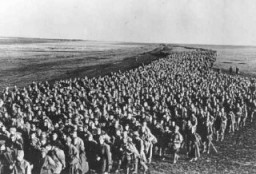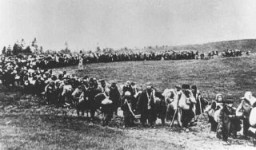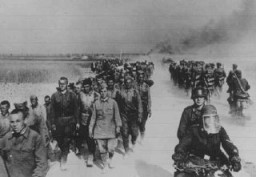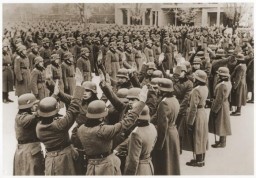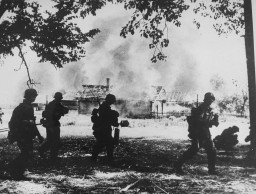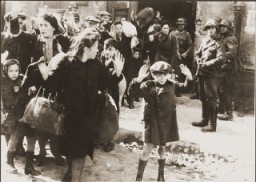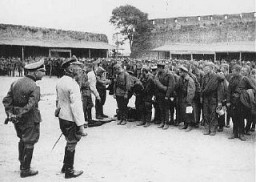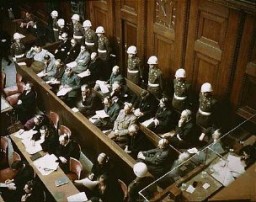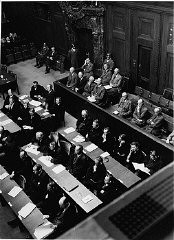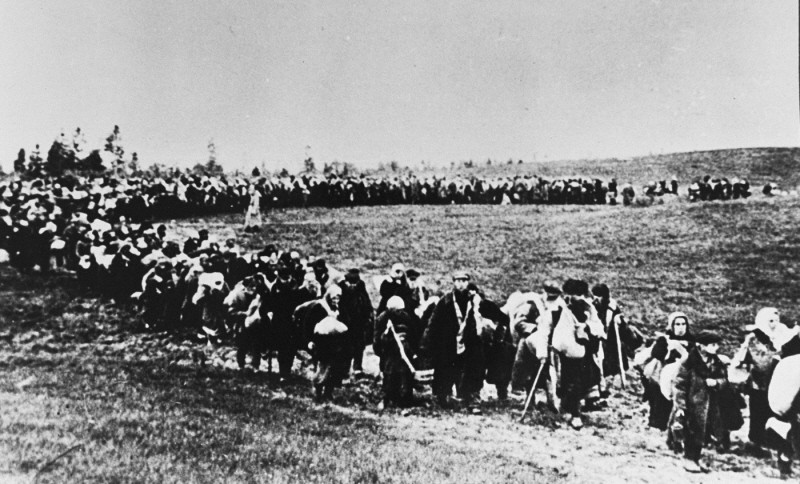
The German Army and the Racial Nature of the War against the Soviet Union
The Goal of Expanding German Territory
One motivation for the German invasion of the Soviet Union was the desire to acquire Lebensraum (living space) for the German people to colonize, at the expense of the Russians, Belorussians, Ukrainians, and Baltic peoples. Hitler and other Nazi leaders thought of this goal in both racial and ideological terms. The conquest of "living space" meant not only German racial domination over the conquered peoples, but a crusade against Judaism and Communism. German military and police authorities intended to wage a war of annihilation against the Communist state as well as against the Jews of the Soviet Union, whom they characterized as forming the "racial basis" for the Soviet state.
The Order to Shoot "Racial Enemies"
The Commissar Order issued by the German Armed Forces High Command ordered the shooting of all political commissars of the Soviet army who were taken prisoner. In the summer of 1941 most members of the German armed forces complied with this order. The Commissar Order was rescinded in May 1942 at the urging of field commanders, who had come up against much stronger Soviet resistance when the regular shooting of Soviet army political commissars became general knowledge.
According to Nazi ideology, Slavs were useless subhumans. As such, their leaders, the Soviet elite, were to be killed and the remainder of the population enslaved or expelled further eastward. As a result of these racist fantasies, millions of Soviet civilians were deliberately killed, starved, or worked to death. Millions of others were deported for forced labor in Germany or enslaved in the occupied eastern territories. German planners called for the ruthless exploitation of Soviet resources, especially of agricultural produce. This was one of Germany's major war aims in the east.
The Economic Exploitation of the Soviet Population
As early as May 1941, German planners of the economic exploitation of Soviet territory were well aware that such exploitation by Germany would "inevitably" result "in millions of people starving to death." In this way, the planned starvation of Soviet citizens was directly tied to the German policy of making sure there was enough food for the home front. No doubt Hitler and others remembered the food riots of World War I, which they believed Germany lost not at the military front but on the home front. This time they intended to keep food supplies and morale up, even if it meant the starvation of millions of Slavs.
The Ruthless Repression of Resistance
In the context of this brutal war of annihilation, German forces in 1941 had little regard for the Soviet civilian population. This was the result not only of Nazi propaganda —in which the Soviet population was portrayed as subhuman—but also of the basic orders issued by the military leadership. Hitler's directive for the attack on the Soviet Union, the "Barbarossa" decree, called on the German troops to react to any type of resistance, even passive resistance, with shooting. German forces burned entire villages and shot the rural population of whole districts in retaliation for partisan attacks. On the other hand, military authorities made it clear that crimes committed by German soldiers were not to be punished if they claimed to have ideological considerations as their motive. This was an open invitation for soldiers to behave brutally.
Series: Soviet Prisoners of War
Series: German Military and the Holocaust
Switch Series
Critical Thinking Questions
- Compare this policy and these orders to German methods and orders on the Western front. How were they different and why?
- Did the orders on the eastern front comply with German military codes and international law? How did military leaders explain the gaps?

